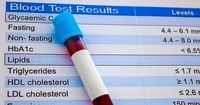On November 8, 2025, the world of cardiovascular medicine witnessed a potentially transformative development: researchers announced the results of a Phase 1, first-in-human clinical trial demonstrating that a single infusion of an investigational CRISPR-Cas9 gene-editing therapy, known as CTX310, could safely reduce LDL cholesterol by about 50% and triglycerides by roughly 55% in people with difficult-to-treat lipid disorders. The findings, presented at the American Heart Association’s Scientific Sessions 2025 in New Orleans and simultaneously published in the New England Journal of Medicine, have the medical community abuzz with hope—and a healthy dose of scientific caution.
The trial, conducted from June 2024 to August 2025, involved 15 adults aged between 18 and 75 years (with a median age of 53), recruited from six sites across Australia, New Zealand, and the United Kingdom. Participants included 13 males and 2 females, all of whom had persistently high cholesterol and triglyceride levels despite being on the maximum tolerated therapies. Among them were patients with rare genetic conditions such as homozygous familial hypercholesterolemia, as well as others with mixed lipid disorders and severe hypertriglyceridemia.
CTX310, the experimental therapy at the heart of the study, employs CRISPR-Cas9 gene-editing technology delivered as a one-time intravenous infusion. The treatment works by using tiny fat-based particles to carry the CRISPR editing machinery into the liver, where it targets and switches off the gene for angiopoietin-like protein 3 (ANGPTL3). This gene is known to regulate both LDL cholesterol (the so-called "bad" cholesterol) and triglycerides—two blood fats directly linked to the development of atherosclerotic cardiovascular disease, heart attack, and stroke.
Within just two weeks of receiving the infusion, participants’ LDL cholesterol and triglyceride levels began to drop dramatically. According to data presented at the conference, the reductions were not only rapid but also sustained for at least 60 days—the latest follow-up included in the preliminary analysis. In fact, researchers reported that at the highest dose, LDL cholesterol and triglycerides were reduced by up to 60%. “This is really unprecedented. A single treatment that simultaneously lowered LDL cholesterol and triglycerides,” said Dr. Luke J. Laffin, lead study author and preventive cardiologist at the Cleveland Clinic, as quoted by the American Heart Association. “If confirmed in larger trials, this one-and-done approach could transform care for people with lifelong lipid disorders and dramatically reduce cardiovascular risk.”
For millions, the struggle with high cholesterol and triglycerides is all too familiar. According to the American Heart Association’s 2025 Heart Disease and Stroke Statistics, around 35% of U.S. adults—or 86.4 million people—have total cholesterol levels of 200 mg/dL or higher. The challenge is compounded by poor adherence: “Adherence to treatment is a significant issue for patients. In fact, half of the patients who are treated with cholesterol-lowering drugs stop taking them within a year,” explained Dr. Steven Nissen, Chief Academic Officer of the Heart, Vascular & Thoracic Institute at Cleveland Clinic and a co-author of the study, as cited by the Cleveland Clinic. The allure of a single, durable treatment is clear: it could bypass the pitfalls of daily pills or monthly injections, offering lasting benefits from a single visit.
Safety, of course, remains paramount. In the trial, CTX310 was administered as a single intravenous infusion at doses ranging from 0.1 to 0.8 mg/kg, after patients were pre-treated with corticosteroids and antihistamines to minimize potential reactions. The safety profile was encouraging: three participants experienced minor infusion-related reactions, such as back pain and nausea, which resolved with medication. One participant, who already had elevated liver enzymes before treatment, experienced a temporary further rise in these enzymes that normalized within days without the need for intervention. Importantly, no serious adverse events related to the therapy were observed during the short-term follow-up period.
“Importantly, there were no serious safety events related to CTX310,” emphasized Dr. Laffin in the Cleveland Clinic’s press release. “However, this was a small and relatively short study, and we will need to continue to study the safety rigorously in future trials.” In line with U.S. Food and Drug Administration (FDA) guidance for gene-editing therapies, all participants will be monitored for one year within the trial, with additional safety follow-up extending to 15 years to detect any potential long-term effects.
The scientific community has taken note of the therapy’s dual impact. Until now, no treatment has been able to achieve such large reductions in both LDL cholesterol and triglycerides simultaneously, marking what the American Heart Association called “a major advance for patients with mixed lipid disorders.” Traditionally, patients with both high cholesterol and high triglycerides have required multiple medications, each with its own side effects and adherence challenges. The prospect of a single, durable solution could represent a paradigm shift in the management of cardiovascular risk.
The trial’s design was rigorous but, as with all early-stage research, not without limitations. The small sample size and the predominance of male participants mean that results may not be generalizable to broader populations, including women and individuals from different age groups or ethnic backgrounds. Moreover, participants had a variety of lipid disorders, so larger studies will be needed to confirm efficacy and safety across more diverse patient populations.
Looking ahead, the research team plans to launch Phase 2 studies in late 2025 or early 2026. These studies will focus on broader patient populations and longer-term outcomes, aiming to validate the therapy’s promise and ensure its safety over time. The current study was funded by CRISPR Therapeutics AG, based in Zug, Switzerland, and involved collaborations with leading academic centers and clinicians in the cardiovascular field.
The implications for public health could be profound. High cholesterol remains a leading risk factor for heart disease and stroke—the top causes of death worldwide. Efforts such as the American Heart Association’s “Lower Your LDL Cholesterol Now™ Initiative” underscore the urgent need for effective, accessible treatments that patients will actually use. As Dr. Nissen put it, “The efficacy demonstrated in the current trial is highly promising and represents a potential new frontier for drug development.”
Yet, as with all medical breakthroughs, measured optimism is warranted. The gene-editing approach is still in its infancy, and regulatory agencies, as well as the broader scientific community, will be watching closely as longer-term data emerge. The trial’s success so far is a testament to decades of investment in basic science, clinical research, and the tireless work of patients and investigators willing to venture into uncharted territory.
For now, CTX310 stands as a beacon of what might soon be possible: a future where a single infusion could rewrite the script for millions living with stubbornly high cholesterol and triglycerides—and, perhaps, change the trajectory of cardiovascular disease for generations to come.






